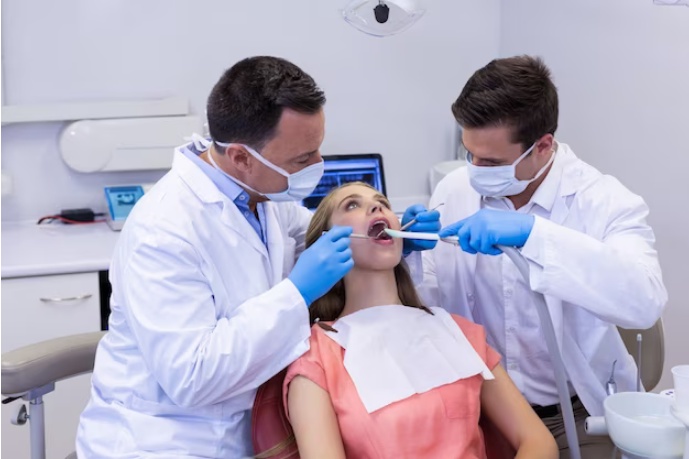Introduction
Orthodontic treatment for children is a critical aspect of pediatric dental care, aimed at addressing issues related to misaligned teeth and jaw structures. These problems, if left untreated, can lead to a range of oral health and functional issues. Understanding what to expect during orthodontic treatment for children is essential for parents and caregivers to ensure the best possible outcomes for their child's dental health and overall well-being.
The Importance of Early Intervention
Orthodontic issues in children often become apparent as they grow and their permanent teeth start coming in. Common problems include overcrowding, malocclusions (misalignment of the upper and lower teeth), and bite irregularities. It is crucial to address these issues early because the growing bones and developing teeth in children respond more readily to orthodontic treatment.
Early intervention can prevent the progression of these issues into adulthood when they can become more complex and challenging to treat. Furthermore, addressing orthodontic problems in childhood can contribute to improved oral health, proper jaw development, and a more confident smile.
The Initial Consultation
The orthodontic journey for children typically begins with an initial consultation. During this appointment, the orthodontist assesses the child's oral health, takes X-rays and photographs, and discusses any concerns or issues with the parent or caregiver. This consultation is an essential step to determine if orthodontic treatment is needed and to create a customized treatment plan.
Orthodontic Diagnosis and Treatment Planning
After the initial consultation, the orthodontist carefully reviews the collected data to diagnose the child's orthodontic issues. The diagnosis helps determine the type of treatment that will be most effective. The treatment plan may involve various orthodontic appliances, such as braces or clear aligners, depending on the nature and severity of the child's misalignment.
The treatment plan is then discussed with the child's parent or caregiver, who can ask questions and address any concerns they may have. It is crucial for parents to actively participate in this process to ensure they are comfortable with the proposed treatment and understand their role in supporting the child throughout the orthodontic journey.
The Orthodontic Appliance
Once the treatment plan is agreed upon, the orthodontic appliance is fitted. Braces are a common choice for children with moderate to severe orthodontic issues. Braces consist of brackets, wires, and bands that work together to gradually move the teeth into their proper positions.
The initial fitting may take some time as the orthodontist carefully places each bracket on the teeth and secures them with bands and wires. The child may experience some discomfort or soreness in the days following the fitting, but this is typically manageable with over-the-counter pain relief and soft foods.
For children with less severe orthodontic issues or those concerned about the appearance of braces, clear aligners may be an option. Clear aligners are removable and offer a more discreet way to straighten teeth. However, they require the child to wear them consistently and remove them only for eating and brushing.
Maintenance and Adjustments
Orthodontic treatment is an ongoing process that requires regular maintenance and adjustments. Typically, children with braces will need to visit the orthodontist every 4-6 weeks for adjustments. During these appointments, the orthodontist will make necessary modifications to the braces to continue guiding the teeth into their desired positions.
Children with clear aligners will also have periodic check-ups to ensure that the treatment is progressing as planned. The orthodontist may provide a new set of aligners as the child's teeth move into the desired alignment. It is crucial for children and parents to adhere to the recommended appointment schedule and follow the orthodontist's instructions for optimal results.
Oral Hygiene and Dietary Considerations
Maintaining good oral hygiene is paramount during orthodontic treatment. Children with braces must be diligent in brushing and flossing their teeth to prevent plaque buildup around the brackets and wires. Orthodontists often provide special brushes and flossing tools to make oral hygiene easier for children with braces.
Certain dietary restrictions may also be necessary to protect the orthodontic appliances and avoid damage. Children with braces should avoid sticky and hard foods that can dislodge brackets or bend wires. While clear aligners are removable, it's essential to remove them while eating to prevent damage or staining.
Duration of Treatment
The duration of orthodontic treatment for children varies depending on the complexity of the issues being addressed. Some children may only need braces or aligners for a year or two, while others with more severe misalignments may require treatment for several years.
It's essential for parents and children to understand that orthodontic treatment is a gradual process, and the timeline may be adjusted based on the child's response to treatment. Consistent compliance with appointments, oral hygiene, and dietary recommendations can help ensure the treatment stays on track.
Completion of Treatment
Once the orthodontist determines that the child's teeth have reached their desired alignment, the orthodontic appliances are removed. This is an exciting moment for both the child and their parents, as they can see the transformation of their smile.
However, the journey doesn't end here. To maintain the results achieved through orthodontic treatment, children will be provided with retainers. Retainers help keep the teeth in their new positions and prevent relapse. It is crucial for children to wear their retainers as prescribed by the orthodontist to ensure the longevity of their straightened smile.
Conclusion
Orthodontic for children treatment is a crucial aspect of pediatric dental care that addresses misaligned teeth and jaw structures. Early intervention is essential to prevent issues from progressing into adulthood and to promote optimal oral health and a confident smile.
Parents and caregivers should actively participate in the orthodontic journey by attending consultations, supporting their child's oral hygiene efforts, and ensuring compliance with treatment recommendations. With proper care and commitment, children can achieve a straight and healthy smile that will benefit them for a lifetime.


No comments yet